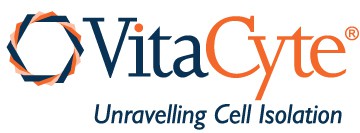Our ContributionsA History of Innovative Solutions
We’re proud of our history because we’ve contributed to many “firsts” in the field of cell isolation. Here’s a brief look at some of those firsts, including the first patents for manufacture of defined and purified mixtures of protease and collagenase (now expired) initially assigned to Boehringer Mannheim Corporation, where the first author was Francis Dwulet, one of VitaCyte’s co-founders.
Enzyme mixtures of purified C. histolyticum collagenase and bacterial neutral protease to isolate mammalian cells from tissue.1,2
Significance
First cost effective, commercial manufacture of high quality purified collagenase-protease enzyme mixture to isolate cells, validating earlier reports that indicated both enzymes required for releasing cells from tissue.
Development of a specific, functional collagenase assay where specific activity of different forms of purified enzymes correlate with physico-chemical analysis.3
Significance
First report of specific collagen degradation activity (CDA U/mg protein) correlating with the structure function of collagenase enzymes.
Indication that molecular form of class I collagenase is associated with higher human islet yields when used in enzyme mixtures that also contain class II collagenase and supplemental protease.4
Significance
First report showing that intact class I collagenase (116 kDa) more effective in human islet recovery than truncated form of class I (100 kDa). Results confirmed in internal study at VitaCyte, showing that intact class I was 19x more effective than truncated class I collagenase in recovering porcine islets when used by mass than truncated class I collagenase when used in enzyme mixtures that also contain class II collagenase and supplemental protease.
Proposed mechanism of interaction between class I and class II C. histolyticum collagenase and neutral protease to release cells from tissue.5
Significance
First report of proposed mechanism of enzymatic release of cells from the extracellular matrix. Report emphasizes the importance of neutral protease as an important factor to consider in optimizing enzyme formulations for cell recovery.
Use of design of experiment methodology to show that a broader class I:class II ratio of C. histolyticum collagenase was effective in human islet isolation. The ratios at either end range were 27:73 and 55:45 class I:class II ratios.6
Significance
First report to assess effect of ratio of these two collagenase forms on human islet recovery. Prior to this report, a 60:40 class I:class II ratio used primarily for isolating human islets.
6
Dispase™ equivalent enzyme, BP Protease (cat # 003-1000) is an effective replacement for thermolysin in human islet isolation.6
Significance
First published report demonstrating the effectiveness of BP Protease in human islet isolation.
References
Dwulet FE, Ellis BB, Gill JF, Jacobsen LB, Smith ME, Waters DG, inventors; Purified mixture of collagenase I, collagenase II, and two other proteases patent US Patent # 5,753,485.
Dwulet FE, Smith ME, inventors; Composition for tissue dissociation containing collagenase I and II from Clostridium histolyticum and a neutral protease. United States patent 5,830,741.
Balamurugan AN, Breite AG, Anazawa T, et al. Successful human islet isolation and transplantation indicating the importance of class 1 collagenase and collagen degradation activity assay. Transplantation 2010; 89(8): 954-61.
Balamurugan AN, Green ML, Breite AG, et al. Identifying Effective Enzyme Activity Targets for Recombinant Class I and Class II Collagenase for Successful Human Islet Isolation. Transplantation direct 2016; 2(1): e54.
